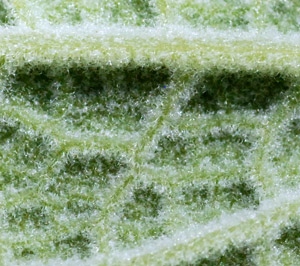Foxgloves
Leaves and stem
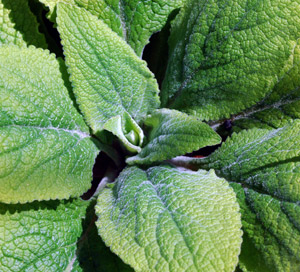
The leaves are large, soft and downy - the shape is that of a broad spear. On the edge of the leaf, there are blunt teeth. In the first year, leaves form a rosette or clump at soil level. These lower leaves have a stalk (petiole), whereas those on the flowering stem do not.
The underside of the leaf is noticeably soft or downy - being covered with many small hair like structures.
The stem is erect and hairy, the flowers tend to nod to one side.
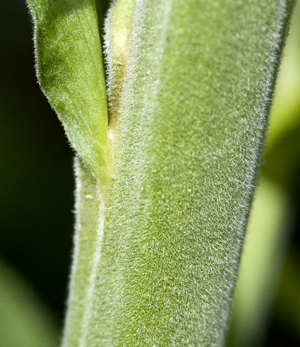
Flowers and Fruits
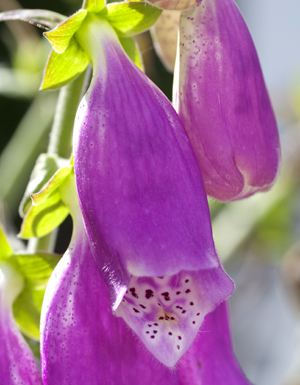
The pinkish purple flowers are carried on a long tapering spike. The hang downward - drooping to one side of the stem. They may be up to two inches long. Each flower has a tubular shape, a bit like the 'finger of a glove'*. The end of the flower may also bear a number of hairs (see image).
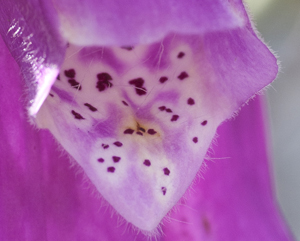
Within the opening of each flower are a number of deep crimson spots - sometimes on a whitish / cream background. The green sepals are much shorter but quite visible. Foxgloves are much favoured by bumblebees - which act as pollinating agents.
Ecology and other notes
Foxgloves are familiar as garden plants but are widespread in woodlands and hedgerows. They are often abundant in clearing or areas where coppicing / felling has occurred. The foxglove belongs to the same family as the figwort.
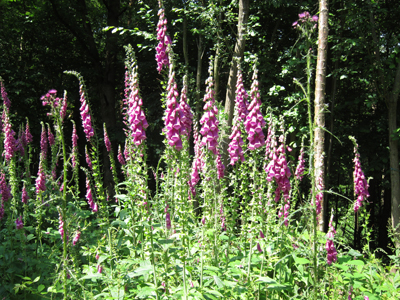
It is a biennial and in the first year, it forms a clump or rosette of leaves. In the second year, this rosette produces the flower spike - which may be up to 2 metres in height. Each plant can produce many thousands of seeds and it is not uncommon to find foxgloves massed together in clumps or drifts.
Its scientific name is Digitalis purpurea - "digitalis' meaning finger-like. The plant may contain several deadly physiological and chemically related cardiac and steroidal glycosides. Thus, the plants have collected several names - dead man’s bells and witch's gloves. The plant is toxic, including the roots and seeds.
